Zotac ZBOX MAGNUS EN970 Review - A Gaming mini-PC Done Right
by Ganesh T S on September 28, 2015 8:00 AM ESTGaming Benchmarks
The gaming credentials of the GTX 960 are quite impressive. Even though the tag indicates a desktop GPU, the internal hardware is still a mobile GPU - the GTX 970M. It is based on Maxwell GM204. The performance, however, should be similar to that of the desktop GTX 960.
For the purpose of benchmarking, we chose four different games (Sleeping Dogs, Tomb Raider, Bioshock Infinite and DiRT Showdown) at three different quality levels. In addition, starting with this review, we are also bringing three more benchmarks involving The Talos Principle and GRID Autosport. As someone focusing on HTPCs and multimedia aspects, I rarely get to process gaming benchmarks, even while evaluating GPUs. One of the aspects that I feared was spending lot of time in installing the same games again and again on different PCs under the review scanner. The solution was to go the Steam route. Unfortunately, Steam also likes to keep the game files updated. A quick online search revealed that Steam could make use of an external drive for storing the game executables and downloadable content. With the Steam drive on-the-go use-case being read-heavy, the Corsair Flash Voyager GS USB 3.0 128GB Flash Drive (with read speeds of up to 275 MBps) was ideal for use as a portable Steam drive.
Sleeping Dogs

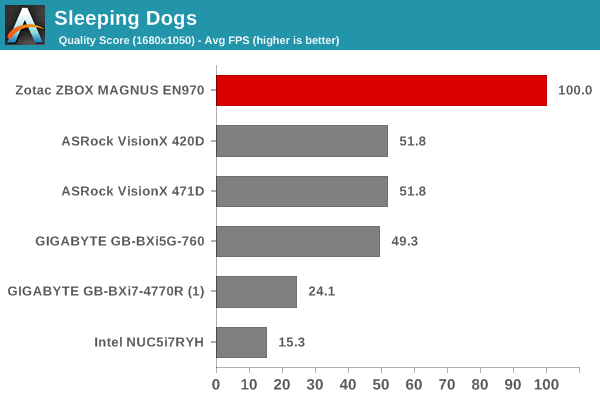
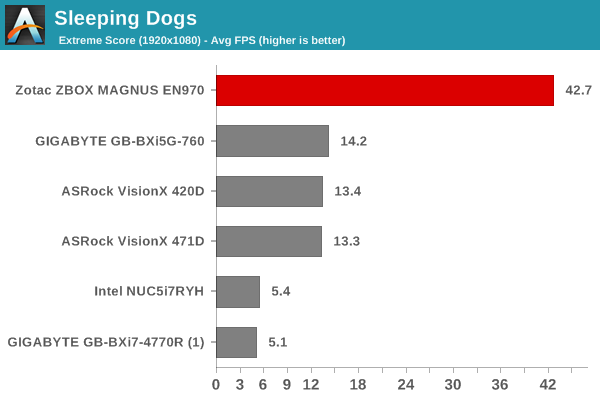
Tomb Raider
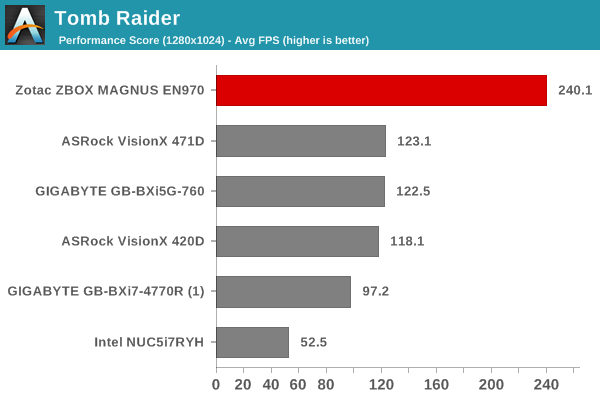
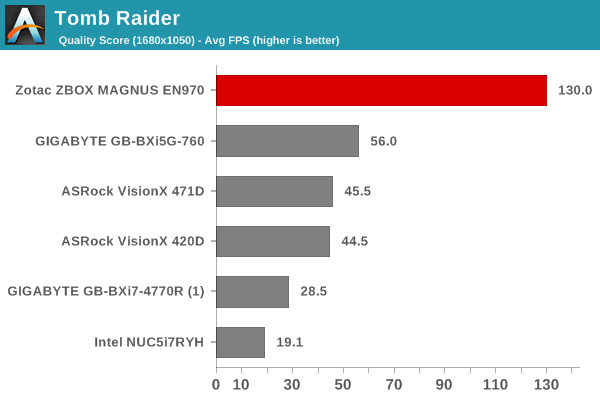
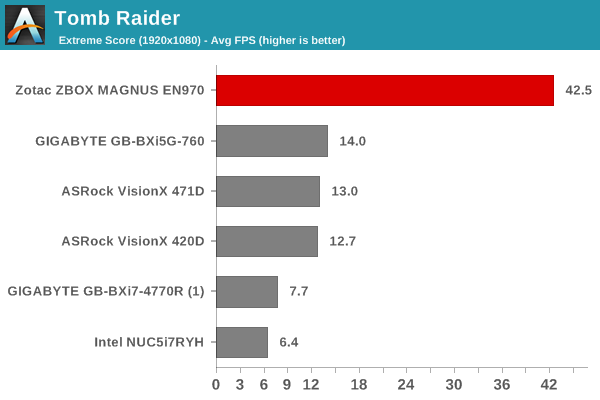
Bioshock Infinite
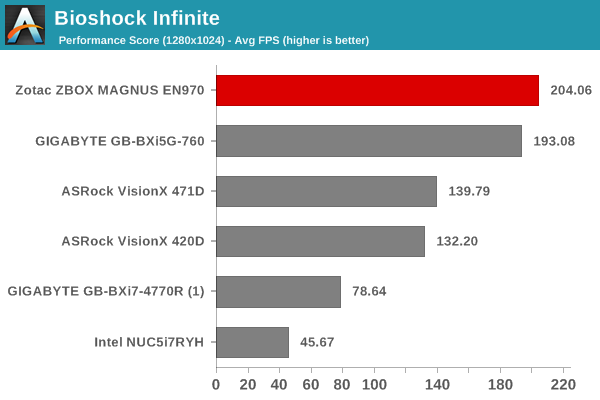
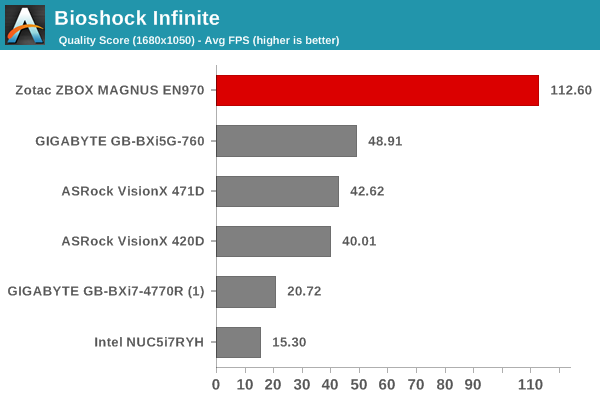
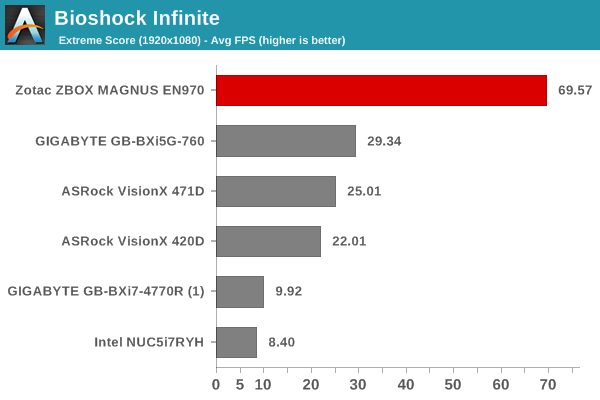
DiRT Showdown
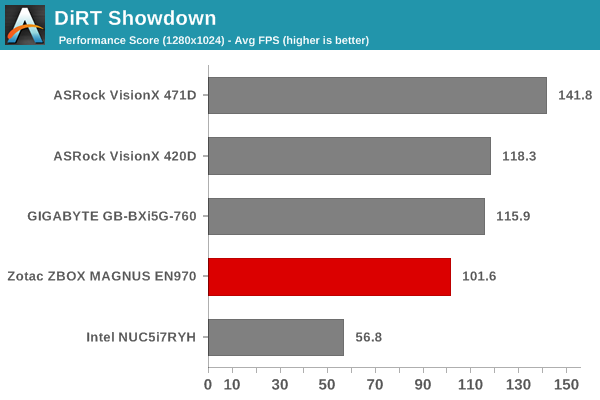
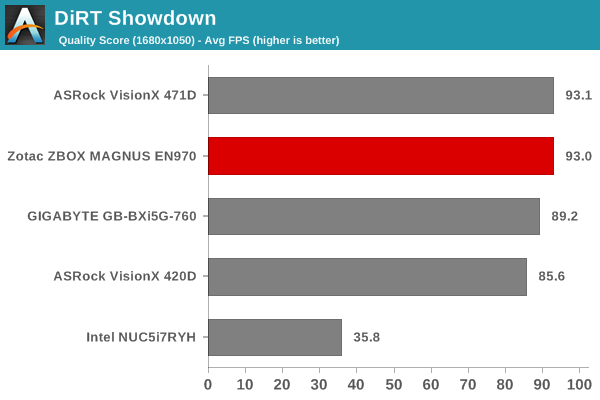
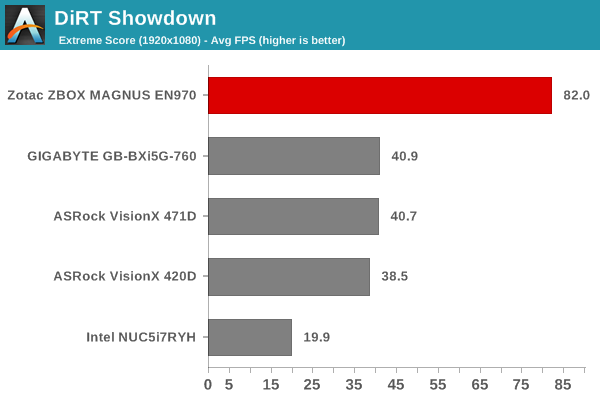
The Talos Principle
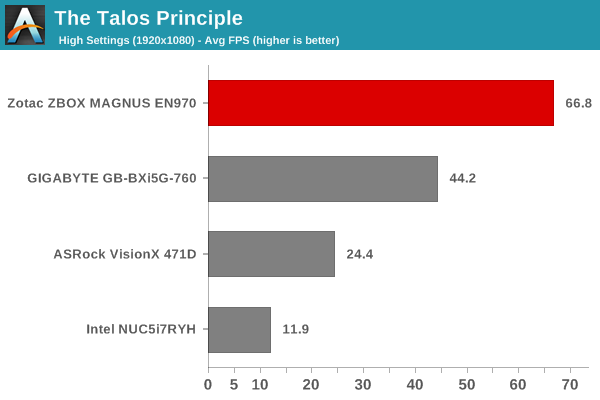

GRID Autosport
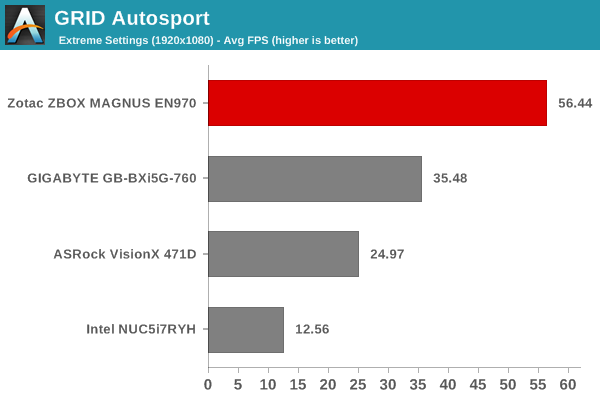
In the gaming benchmarks, the NVIDIA GTX 960 (GTX 970M) simply smokes the competition, particularly at the 1080p quality settings. The ZBOX MAGNUS EN970 more than makes up for the weak CPU with impressive gaming performance.










88 Comments
View All Comments
KateH - Monday, September 28, 2015 - link
I would be very curious to hear more about the GPU rebranding situation... why would a 1280-shader GM204 on an MXM card be a 970m in a laptop but a 960 non-M in a SFF? Why would Nvidia/Zotac go to the trouble of editing the VGA BIOS and drivers to make this GM204 show up as a 960 when there are already loads of MXM 970m's that are functionally identical to this aside from re-badging? The OEM GPU re-branding situation is ridiculous; Zotac/Nvidia have created a doubly confusing situation where this card could be easily confused for either a significantly-slower GM107-based GTX 960m (that's itself a rebadged 860m) or a slightly-slower GM206 GTX 960 that has the potentially-important HEVC decode that's actually not present in this "960".KateH - Monday, September 28, 2015 - link
And while I'm on a rant, re-badging between generations is ridiculous too- but I know by now that's a losing battle that's only getting worse. FFS.mapesdhs - Monday, September 28, 2015 - link
A lot of that going on by all sides, but it's hard to discuss without enraging rival armies of haters and fanboys. We'd be a lot better off if nobody did it. What really bugs me is the massive performance overlap of newer lesser models vs. older models. The naming system allows one to infer that a newer card will have a particular level of basic performance, but the reality is often very different. I benchmarked a 650 Ti recently, was amazed to find it often failed to beat an old GTX 460.lmcd - Tuesday, September 29, 2015 - link
I mean the 650 Ti should be like 2/3 the power consumption at most, no?KateH - Tuesday, September 29, 2015 - link
Yeah, something like that. ~100-120W for a 650Ti vs ~150-170W for a 460. The 660 is in the same power envelope as the 460 and should outperform it by a fair marginrtho782 - Tuesday, September 29, 2015 - link
You're perfectly right. Having a separate mobile product stack made sense when mobile gpus were way behind desktop ones, now they use the same silicon, less so.I think we should have the same product names and tiers for both, perhaps use the "m" suffix in cases where the clockspeed is much lower in the laptop variant.
KateH - Tuesday, September 29, 2015 - link
I kinda wonder if it's not time to do away with the "M" suffix for GPUs altogether and move towards segmentation based on power, like what Intel has done with their K/S/H/Y/U suffixes. Low-power MXM/onboard GPUs are by no means strictly in the realm of notebooks anymore- AIO and SFF computers are using them more and more. And looking at AMD/NV's product stacks, "desktop" GPUs cover ~15W-250W (with all but the top-end being under ~150W) and "mobile" GPUs cover ~15W-125W- that's a whole lot of overlap.ruthan - Tuesday, September 29, 2015 - link
Better than Macmin, but otherwise is better build own, even if MXM is not possible to use by us second category people..adithyay328 - Thursday, October 1, 2015 - link
Those specs actually almost give my mid tower desktop a run for it's money-almost.aj654987 - Friday, October 2, 2015 - link
Well, for the alienware alpha with the 860m and the T series processors (Haswell 35W), the CPU's are almost all GPU limited, even the i3's. So there is room for a higher powered GPU.With going broadwell, the lowest desktop CPU is 65 watts so far, which is probably too high for that small case, so their only choice is a 15 watt mobile chip.